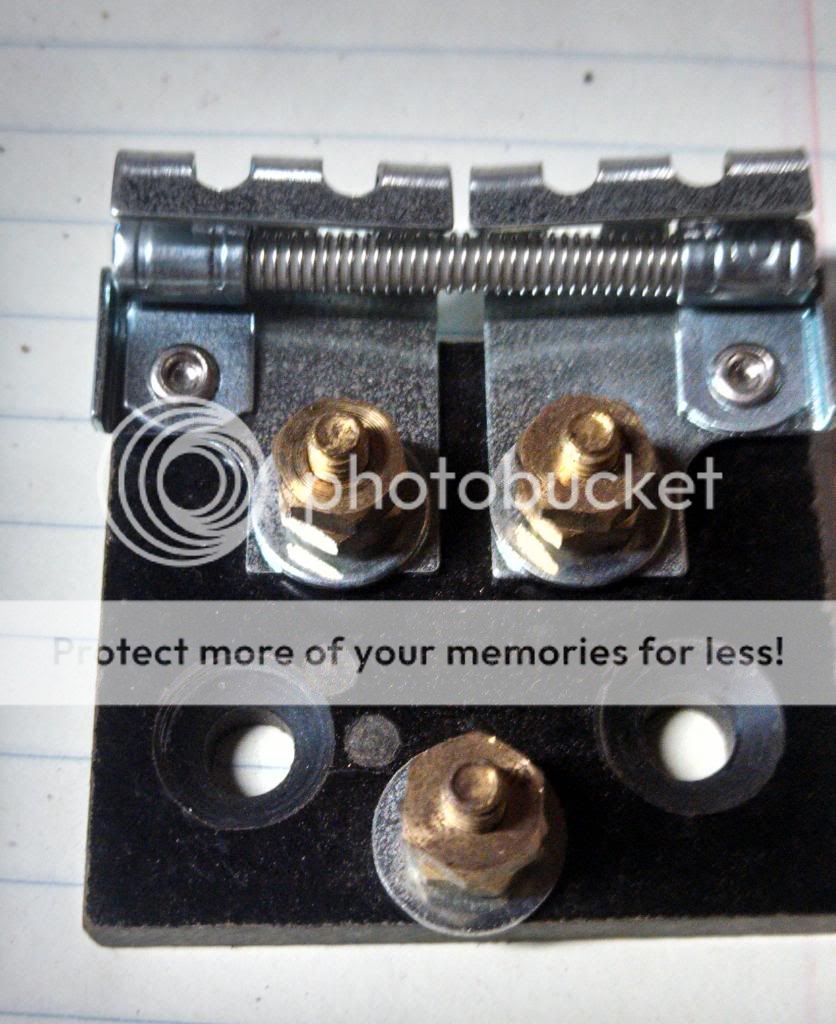Your question ".... do I use the 6v white resister I got to replace the old black resister a couple of years ago? "
and the fact that you do not have spark tells me that it's very likely that you have burned up a coil by trying to figure out what resistor to use.
Check out tip # 30.
All you need is the OEM ballast resistor and a 12 volt coil (a front coil with at least 2.5 ohms of internal resistance )
That's it. No other resistors.
As to no spark......
Assuming that the bushings & advance weights are ok (*see below), & that you have correct voltage to the coil (battery voltage with the points open and about half that with the points closed), the most common electrical failure (no spark, weak spark) points on the front mount are:
1. The insulator under the brass concave head screw & where the copper strip attaches. (it’s fiber & will wear out; poke & prod w/ your meter leads to make sure it still works) If you need to replace the insulator, use a .250 x 3/8 nylon square nylon anchor nut available at most big box home stores
2. The pigtail at the bottom of the coil not making contact w/ the concave head brass screw inside the distributor. (With the coil on, the pigtail must firmly contact the brass screw. No contact = no spark
3. The copper strip is broken or grounded to the plate. (look very carefully for cracks & breaks).
4. The condenser wire grounding to the plate or side of the distributor.
5. The tab on the bottom of the coil not making contact w/ the brass button on the cap. (With the cap on, the tab must firmly contact the brass button. No contact = no spark.)
6. Incorrect positioning of the spring clip on the plate causing the pigtail to ground. (the open part of the clip goes between 7 & 9 o’clock on the plate. That puts the straight part of the clip opposite of the timing screw at 3 o’clock)
7. Incorrect seating of the coil on the distributor due to a loose bail or no gasket.(the coil must not move at all; if it does, replace the gasket or bail. Or stick some cardboard under the bail).
8. Water/moisture inside the cap due to gasket failure or the absence of a gasket. (the cap AND coil have gaskets)
9. Dirty/corroded/burned/incorrectly gapped or misaligned points. I use only Wells, Blue Streak or Echlin brand points (* *see below).
10. Burned rotor, cracked/carbon tracked cap.
At this point, I just put the distributor, coil & cap all back on the tractor as a unit. The reason I do this is because it is real easy to get the cap or coil misaligned trying to put it back together, one piece at a time. The result is something gets broken or you get a ‘no spark’ problem.
It's possible to put it back on wrong & break it. Look at the slot on the end of the cam shaft. Whatever angle it happens to be, turn the distributor tang to match it. Make sure you can tell the wide side from the narrow side on both the cam & distributor! (close counts). Place the distributor on the front of the engine, gently push it in place & slowly turn the distributor body until you feel the tang slip into the slot. Rotate the distributor body until the bolt holes line up. Hand tighten the two bolts until the distributor body is flush with the timing gear cover.
Post back w/ results or more questions.
* Unscrew the plate hold down screw & remove the C clip to get the plate out. Remove the shaft & weights. The weights should freely move.
* *NAPA part numbers:
• Points: FD-6769X
• Condenser: FD-71
• Rotor: FD-104
• Cap: FD-126
75 Tips

